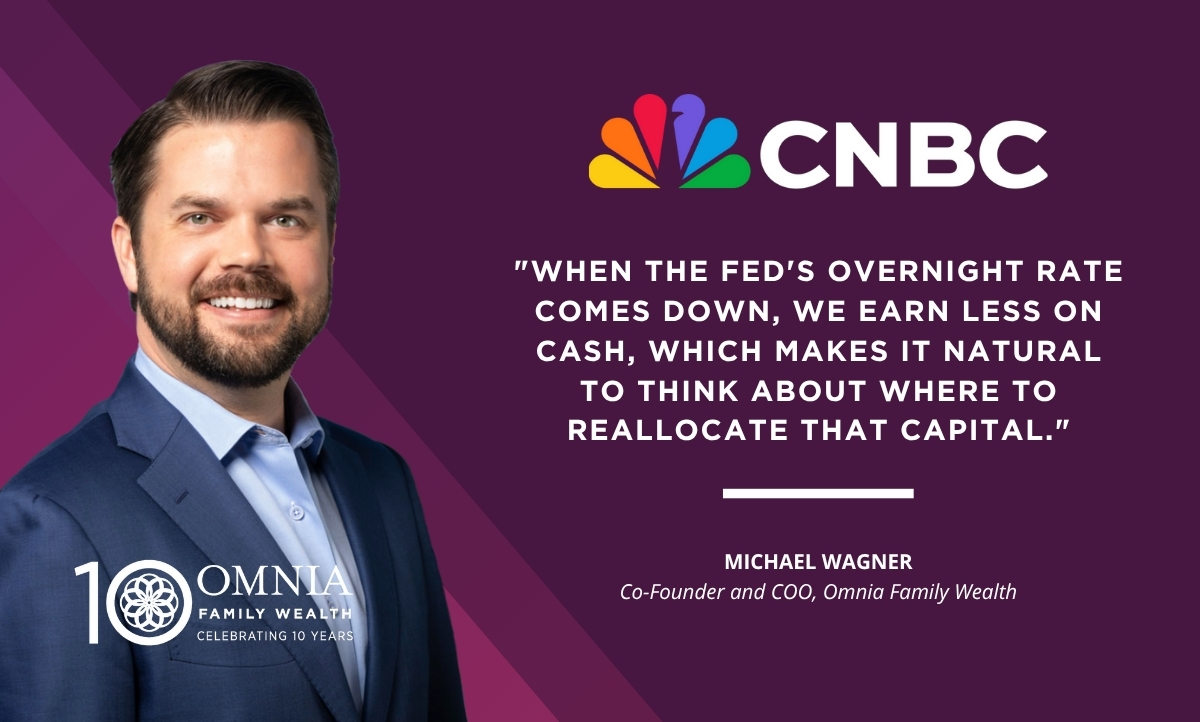
Planning on Selling Your Business?
Consider an exit plan as your first step.
After years of hard work building your company, you may be considering whether or not it is time to sell. The process can be daunting, and the decision is more than financial – it’s also an emotional decision that can impact you and your family for decades. How do you know if it is the right time to sell? Will your family members be involved in the future of the company? How will you transition from business owner and leader to silent partner? What does that mean for you, and what comes next?
Once you decide you are ready to sell, an exit plan can help you map out how to sell your company, how to transition leadership, how to invest new liquid assets and then, longer term, look at what is next for you and your family as you make this delicate transitions.
An exit plan typically has several aspects and can help you plan for these critical questions:
- What is the sale price I need to fund my lifetime liquidity needs and provide for my family’s future?
- What impact will this sale have on my tax liability?
- How can I prepare for the windfall of liquidity?
- How can I transition the leadership of the company so that it continues into the future?
- What comes next for me?
Once you decide it is the right time to sell, there are a few options to consider:
STRATEGIC ACQUISITION
There are always companies looking to acquire or merge with businesses that complement or expand their core business. The purchase is considered “strategic” because it expands market share, affords economies of scale, or adds products and services that dovetail with or complete the current offerings of the acquiring company.
DISCOUNTED ACQUISITION
Businesses that could be a candidate for a strategic acquisition but whose profits or growth curve are still strengthening or have suffered without recovery may still be candidates for acquisition. The challenge is that they won’t be able to command their full market value because of lagging profits or growth. Because of these and other market conditions, this could make the company not as attractive to a strategic buyer. An incentive to complete the deal can be to lower the asking price – sometimes significantly.
SELL TO A SUCCESSOR
One of the better options for many businesses will be to develop a successor and sell the company to the successor at full price. Their successor may be one or more family members, or one or more key executives within the organization. Financing may be available to fund the buyout, but as the number of businesses for sale increases, the majority of internal sales will be paid for out of future cash flows.
Therefore, it becomes critical to identify a successor as soon as possible, determine whether they actually want to own and run the business, and then ensure they are well-prepared to be an effective leader and a successful owner. It generally requires one to two years of development to nurture leadership capabilities, strategic thinking, and judgment in a future leader. Without that development, you run the risk of the business not being successful in the future.
SUCCESOR MANAGER
A variation of selling to a successor is to bring on a successor to run the company but not transition ownership of equity. This option allows the owner to draw out the business’ value from the company while still owning it, but without needing to run it on a day-to-day basis. It requires finding and developing a strong successor, and then offering significant incentive for growth, development and overall success of the firm.
CREATE AN ESOP
In the absence of a strong successor, an option that will also yield full market value is to set up an Employee Stock Option Plan (ESOP). This approach can increase employee loyalty and productivity, ensure business continuity, and gain some tax advantages. An ESOP can be effective, but it requires ample planning and preparation, along with the training and development of the people who will be directing the organization.
THE NEXT STEPS
Once you decide the best course of action to sell your company, a strategic exit plan can help you navigate all the necessary details to ensure a successful sale of your company. Deciding on the structure of the sale is only the first step. A few other points to consider include:
- Market conditions that could affect sale price
- The role your family members will play in the sale
- Long-term wealth planning as a result of the sudden liquidity, and transitioning from a concentrated, single asset portfolio to a more diversified investment portfolio
- The next stage for you – another business? Retirement?
An independent, fiduciary advisor who understands the intricate steps involved in selling your company can help guide you as you make these decisions to help ensure the best outcome possible. For help with the sale of your company, contact us at info@OmniaWealth.com.
Omnia Family Wealth, LLC (“Omnia”), a multi-family office, is a registered investment advisor with the SEC. This commentary is provided for educational and informational purposes only. It does not take into account any investor’s particular investment objectives, strategies, tax status, or investment horizon. No portion of any statement included herein is to be construed as a solicitation to the rendering of personalized investment advice nor an offer to buy or sell a security through this communication. Consult with an accountant or attorney regarding individual tax or legal advice.
Advisory services are only offered to clients or prospective clients where Omnia Family Wealth and its representatives are properly licensed or exempt from licensure. Information in this message is for the intended recipient[s] only. Please visit our website https://omniawealth.com for important disclosures.
This content is provided for informational purposes only and is not intended as a recommendation to invest in any particular asset class or strategy or as a promise of future performance. References to future returns are not promises or even estimates of actual returns a client portfolio may achieve.
The views expressed herein are the view of Omnia only through the date of this report and are subject to change based on market or other conditions. All information has been obtained from sources believed to be reliable, but its accuracy is not guaranteed. Omnia has not conducted an independent verification of the data. The information herein may include inaccuracies or typographical errors. Due to various factors, including the inherent possibility of human or mechanical error, the accuracy, completeness, timeliness and correct sequencing of such information and the results obtained from its use are not guaranteed by Omnia. No representation, warranty, or undertaking, express or implied, is given as to the accuracy or completeness of the information or opinions contained in this report. This report is not an advertisement. It is being distributed for informational and discussion purposes only. Omnia shall not be responsible for investment decisions, damages, or other losses resulting from the use of the information. This report is not intended for public use or distribution. The information contained herein is confidential commercial or financial information, the disclosure of which would cause substantial competitive harm to you, Omnia, or the person or entity from whom the information was obtained, and may not be disclosed except as required by applicable law.









